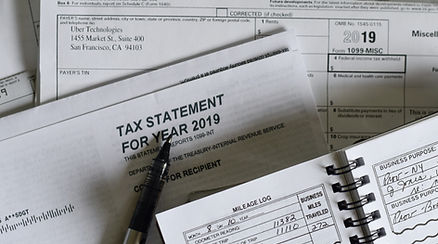
The Tax Benefits of Retirement Saving
Who doesn't like saving money on their taxes, T. Mann Financial can help you best utilize the tax benefits of retirement savings.
Types & Treatment of Tax Preferenced Accounts
Contributions
Distributions
Growth in the account
The government wants you to plan ahead and incentivizes it, are you taking full advantage?
Pre-tax or Tax Deductible
Tax-Deferred
Tax-Free
Health Savings Accounts (HSAs)
Traditional Retirement Accounts
Roth Retirement Accounts
529 Plans (College or ABLE)
Non-Qualified Annuities
Types of Retirement Accounts
Pre-tax or tax-deductible contributions & tax-deferred growth.
Employer-Sponsored
SIMPLE IRA
SEP IRA
401(k)
403(B)
457
After tax contribution
Tax-free growth & withdrawals
Roth 401(k)
Roth 403(B)
Roth 457
Individual
Traditional IRA
Roth IRA
Roth vs. Traditional IRA
Contribute up to $7,000 ($8,000 for 50 and older)
in 2025 combined annual contributions to Roth and traditional IRAs.
Roth IRA
Why choose a Roth IRA?
-
If you expect to be in a lower tax bracket now and a higher tax bracket in retirement.
-
If you need the flexibility to withdraw your contributions at any time without owing taxes or penalties.
-
At 59 ½ you can withdraw your contributions and gains completely tax free, if the account has been open for at least 5 years
Why you might avoid a Roth IRA?
-
Roth IRA contribution limits are reduced or eliminated at higher incomes.
Traditional IRA
Why choose a Traditional IRA?
-
If you expect to be in a higher tax bracket now and a lower tax bracket in retirement.
-
If you need the tax-break today.
Why you might avoid a Traditional IRA?
-
The amount you can deduct for contributions may be reduced or eliminated if you or your spouse is covered by a retirement plan at work.
-
There are Required Minimum Distributions
-
There is a 10% tax penalty for early withdrawals for non-qualified reasons.
Saver's Credit
The Saver’s Credit is a great way for low and moderate-income people to save for retirement while also earning valuable tax credits.
The saver's tax credit is a non-refundable tax credit available to eligible taxpayers who make contributions to....
Employer-Sponsored Retirement Accounts
Individual Retirement Accounts
ABLE Accounts
Claiming a saver's credit when contributing to a retirement plan can reduce an individual's income tax burden in two ways.
-
the saver's credit reduces the actual taxes owed, dollar for dollar.
-
you receive either a reduced tax bill today or tax free withdrawals in retirement via a qualified account.
The credit is worth a maximum of $2,000 ($4,000 if you file jointly in 2025).
Calculate your credit with the contribution chart.

Besides falling into one of the income tiers, you'll also need to meet the following requirements to qualify for the credit:
-
You are age 18 or older
-
You're not a full-time student
-
No one claims you as a dependent on their return.
-
Rollover contributions do not qualify
The Power of Tax Credits Vs. Deductions
Deductions lower your tax bill by reducing your taxable income, a credit directly reduces your tax bill.
Saver’s credit is not a refundable credit.

Retirement Income
How much income should I expect in retirement?
Social Security Income
Who Qualifies?
Workers 62 and older who earned at least 40 credits by paying Social Security Taxes on earnings.
How Much Will I Receive?
In 2024, the maximum monthly benefit for someone at full retirement age was $3,822, but the average 65 year old retiree received just $1,583. -ssa.gov
When Should I Start?
Social Security Timing can increase or decrease your monthly benefit and the total lifetime amount you receive.
Average Retiree Income by Source

Required Minimum Distributions
The Secure 2.0 Act raises the required minimum distribution (RMD) age from 72 to 73 in 2023 and to 75 by 2033, reducing early withdrawal obligations for retirees.

Imagine you turn 73 and live well off of your social security and pension and haven't taken any money out of your other retirement accounts yet.
RMDs may require you to start withdrawing money each year from your non-Roth retirement accounts which will create a taxable event.
You can plan ahead for this, and T. Mann Financial can help!
What is excluded from RMDs?
Roth IRAs are not subject to RMDs during the original owner's lifetime.

How Much Should I Be Saving?
T. Mann Financial can help you determine how much you need for retirement.
How much do I need?
The traditional advice is to expect to replace
70 - 85%
of your current income in retirement

T. Mann Financial Helps Answer this Question
in an Individualized Data-Driven Approach
T. Mann Financial leverages Orion Financial Planning technology to make a custom data driven retirement plan for our clients.
We start with your goals and current situation to forecast out to help you think more strategically moving forward.




